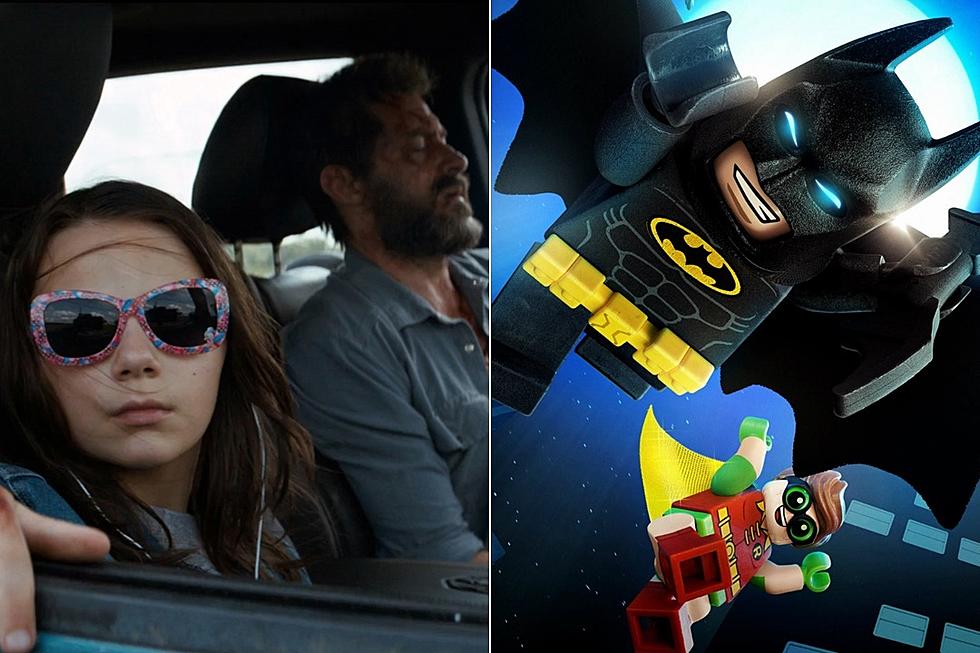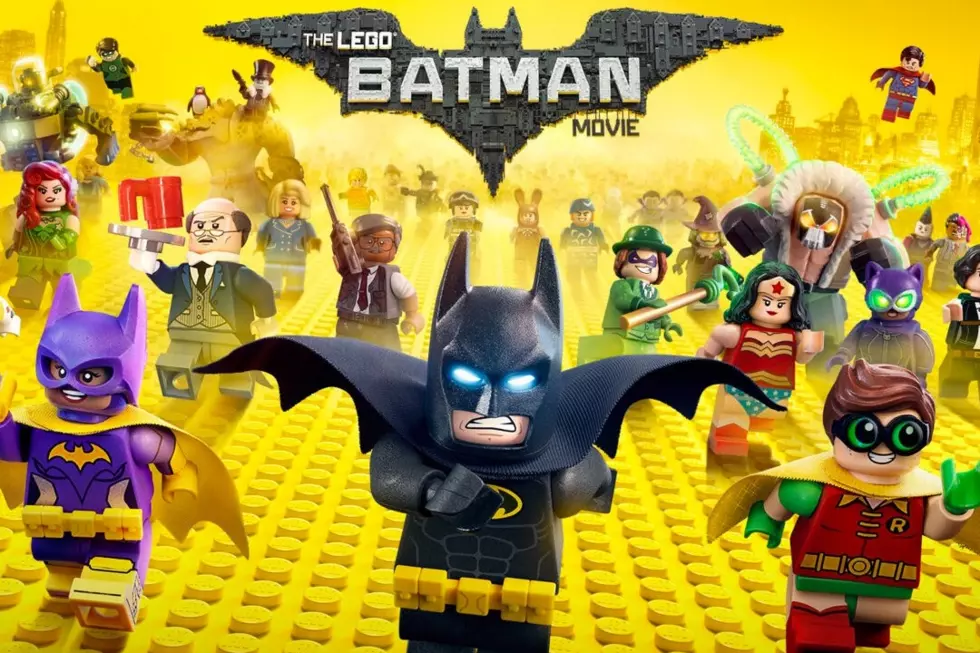
The Evolution of Dick: The Best Dick Grayson Stories by Decade
Many of comics’ most popular heroes have been around for decades, and in the case of the big names from the publisher now known as DC Comics, some have been around for a sizable chunk of a century. As these characters passed through the different historical eras known in comics as the Golden Age (the late 1930s through the early 1950s), the Silver Age (the mid 1950s through the late 1960s), the Bronze Age (the early 1970s through the mid 1980s) and on into modern times, they have experienced considerable changes in tone and portrayal that reflect the zeitgeist of the time.
With this feature we’ll help you navigate the very best stories of DC Comics’ most beloved characters decade by decade. This week, we’re taking a look at Dick Grayson, the first Robin.
1940s: “Robin the Boy Wonder”
The first of many Robins, Dick Grayson was introduced in 1940, modeled on Robin Hood and Doctor Watson, in order to lighten Batman's “dark avenger of the night” image to better appeal to children, and to give Batman someone to talk to. Like Bruce Wayne, Dick saw his parents killed by criminals in front of his eyes, and so dedicated his life and all his acrobatic skills to wiping out crime once and for all. Soon Batman and Robin were the Dynamic Duo, and nearly every Batman story for almost the next thirty years would feature Robin.
Robin's first appearance establishes this new status quo and his relationship with Batman and makes it easy to see why he inspired a host of kid-sidekick imitators, but also why he has outlasted almost all of them.
Best of the rest: “The Teen-Age Terrors!” (Star-Spangled Comics vol 1 #65), “The No-Face Crimes!” (Star-Spangled Comics vol 1 #66), “The Barton Brothers!” (Star-Spangled Comics vol 1 #86), “The Man Batman Refused to Help!” (Star-Spangled Comics vol 1 #88)
1950s: “Operation Escape”
Star-Spangled Comics vol 1 #124, by Jim Mooney and an unknown writer
By the late 1940s, Robin was popular enough that he gained his own solo feature in Star-Spangled Comics until the series ended in the early '50s. He was even the cover feature for much of that time until he was later usurped by Western hero Tomahawk. While Batman eventually guest-starred in a number of Robin's stories, these tales often showcased Robin's ability to work separate or differently from Batman.
The selection here is a short puzzle story that shows Dick's facility in using his brains in a way that makes him worthy to be Batman's protege. Trapped in a dungeon with only a few sports-related props, Robin is able to escape in an ingenious way that stumps even the police to whom he is recounting the story. Will it stump you, the reader?
Robin's solo stories from the '40s and '50s can be found in the Robin Archives.
Best of the rest: “A Partner for Batman” (Batman vol 1 #65), “Roberta, The Girl Wonder!” (Star-Spangled Comics vol 1 #103), “Dick Grayson, Detective” (Star-Spangled Comics vol 1 #111), “Operation Robin” (Star-Spangled Comics vol 1 #118), “The Bellboy Wonder” (Star-Spangled Comics vol 1 #120), “Crazy-Quilt Comes Back!” (Star-Spangled Comics vol 1 #123)
1960s: “Requiem for a Titan!”
Teen Titans vol 1 #14, by Bob Haney and Nick Cardy
In the 1960s, Robin found himself filling a new role other than that of teen sidekick: team leader. A few years after the Justice League of America had debuted in the pages of Brave and the Bold, a junior version made up of various teen sidekicks, the Teen Titans, would premiere in the same book. Together with friends such as Aqualad, Wondergirl, Kid Flash, and Speedy, Robin would increasingly start to find his place in the world apart from Batman.
This story, by the original Teen Titans creative team, shows, for one of the first times, a Robin racked with guilt and self-doubt, as he finds himself surrounded by the taunts of his seemingly dead teammates, whom he failed to save. Through a combination of discipline, mental acuity, and physical training, Dick is able to save his friends and assure himself of his place on the team.
The adventures of the original Teen Titans can be found in Showcase Presents: Teen Titans.
Best of the rest: “The Olsen-Robin Team versus the Superman-Batman Team!” (World's Finest #141), “Countdown to Chaos!” (Detective Comics vol 1 #390), “One Bullet Too Many” (Batman vol 1 #217), “The TT's Swingin' Christmas Carol!” (Teen Titans vol 1 #13), , “The Super-Crisis That Struck Earth-Two!” (Justice League of America vol 1 #55-56), “The Thousand and One Dooms of Mister Twister!” (Brave and the Bold vol 1 #54), “The Astounding Separated Man” (Brave and the Bold vol 1 #60), “Robin Dies at Dawn!” (Batman vol 1 #156)
1970s: “My Place in the Sun”
Detective Comics vol 1 #402, by Mike Friedrich and Gil Kane
By the late 1960s, the creative teams behind the Batman line were looking to move way from the camp of the Adam West TV show and get back to those “grim avenger of the night” stories that Robin had been created to move Batman away from in the 1940s. Robin would clearly not fit into this plan. As a result, Dick was moved out of the main stories of Batman and Detective Comics and into backup strips of his own, which saw him leaving the Batcave and venturing out on his own at Hudson University. This period would see him teaming up with Batgirl more often than Batman.
This particular story sees Dick's friend Roy (Speedy) Harper visit him on the Hudson University campus when a food fight breaks out and Robin ends up blaming the wrong party. This leads to Dick doing some of the soul-searching on the nature of being a masked hero that was such a common trope of the Bronze Age.
Robin's solo stories from the '60s and '70s can be found in Showcase Presents: Robin.
Best of the rest: “A Burial for Batgirl!” (Detective Comics vol 1 #400), “Break-Out!” (Detective Comics vol 1 #403), “Vengeance for a Cop” (Batman vol 1 #234), “Who Stole the Gift from Nowhere?” (Batman vol 1 #245), “Return of the Flying Graysons” (Batman vol 1 #250), “The Parking Lot Bandit!” (Detective Comics vol 1 #450-451), “In the Beginning...” (Teen Titans vol 1 #53), “The Titans Kill a Saint?” (Teen Titans vol 1 #25), “Isle of a Thousand Thrills” (Batman Family #3)
1980s: “The Judas Contract”
Dick's place as a hero separate from Batman was cemented even more when the early 1980s saw him founding a new team of Teen Titans, where before long he adopted the new identity of Nightwing and was replaced as Robin by Jason Todd. Here he did a great deal of growing up and even found love, at least for a time, with the alien princess Starfire.
New Teen Titans (and the various permutations of that name) by Wolfman and Perez is one of the most critically acclaimed series of the '80s, and “Judas Contract” is the best-loved NTT story of them all. It is here that Dick rechristens himself as Nightwing and the team faces off against their nemesis, Deathstroke the Terminator.
Best of the rest: “Batman: Year Three” (Batman vol 1 #436-439), “A Lonely Place of Dying” (Batman vol 1 #440-442, New Titans #60-61), “Where Nightmares Begin!” (DC Comics Presents vol 1 #26), “Kidnapped!” (New Teen Titans vol 1 #23-25, Annual #1), “New Teen Titans” (New Teen Titans vol 1 #1-6), “Did Robin Die Tonight?” (Batman vol 1 #408)
1990s: “A Knight in Bludhaven”
Due to Nightwing's growing popularity, after a test one-shot and mini-series, he was given his own ongoing series that saw him moving even further out of Batman's shadow by leaving Gotham and setting up shop in neighboring Bludhaven, a previously unmentioned even-worse version of Gotham. Dick would build his own life here and develop his own rogues' gallery, most notably super-genius monster man Blockbuster.
This first story arc of Nightwing's solo ongoing sees him getting a feel for the corrupt industrial town of Bludhaven, where he decides to make a name for himself, cleaning up a city rotting from the inside with organized crime.
Best of the rest: “Prodigal” (Batman vol 1 #512-514, Batman: Shadow of the Bat #32-34, Detective Comics vol 1 #679-682, Robin vol 4 #11-13), Batman Chronicles: The Gauntlet, “On Wings” (Birds of Prey vol 1 #8), “Fear of God” (Legends of the DCU vol 1 #6), “Something Old, Something New, Something Borrowed, Something...Dead” (New Titans #100), Nightwing Secret Files #1, “Ballistic Romance” (Nightwing vol 2 #38-39)
2000s: “The Black Mirror”
After three decades of Dick Grayson moving away from Batman's shadow and proving that he is his own man, the 2000s were the decade when Dick finally became Batman. Following Batman's apparent death at the hands of Darkseid, Dick steps up not only to fill the cowl, but to serve as mentor to Bruce's estranged son, Damian, who becomes the latest version of Robin. As it turns out, he's really good at both roles.
The premise of “Black Mirror” is that Gotham City is a dark reflection of its most famous denizen, which twists its inhabitants by its corrupting nature, so what happens if the man in the cowl changes? The story follows Dick and Commissioner James Gordon as an unexpected prodigal son returns to Gotham, and the two men are pushed to their limits as they learn what it truly means to protect this city.
Best of the rest: Robin: Year One #1-4, “Nightwing: Year One” (Nightwing vol 1 #101-106), “Retribution” (Batman: Gotham Knights #20-21), “The Duo Dynamic” (Batman Adventures #12), Teen Titans: Year One #1-6, “Batman Reborn” (Batman and Robin #1-6), “Freefall” (Nightwing vol 2 #140-146), Batman: Gates of Gotham #1-5, “Hero's Journey” (Nightwing Annual #2), “Slow Burn” (Nightwing vol 2 #93)
And that's it for the decades we've experienced so far! The 2010s are halfway over; we'll have to see who comes out on top in five years! Will anything beat Grayson: Agents of Spyral? We'll see!
More From ComicsAlliance




![A Jealous Robin Heads To Bludhaven In ‘Nightwing’ #16 [Exclusive Preview]](http://townsquare.media/site/622/files/2017/02/NTW_Featured.jpg?w=980&q=75)




